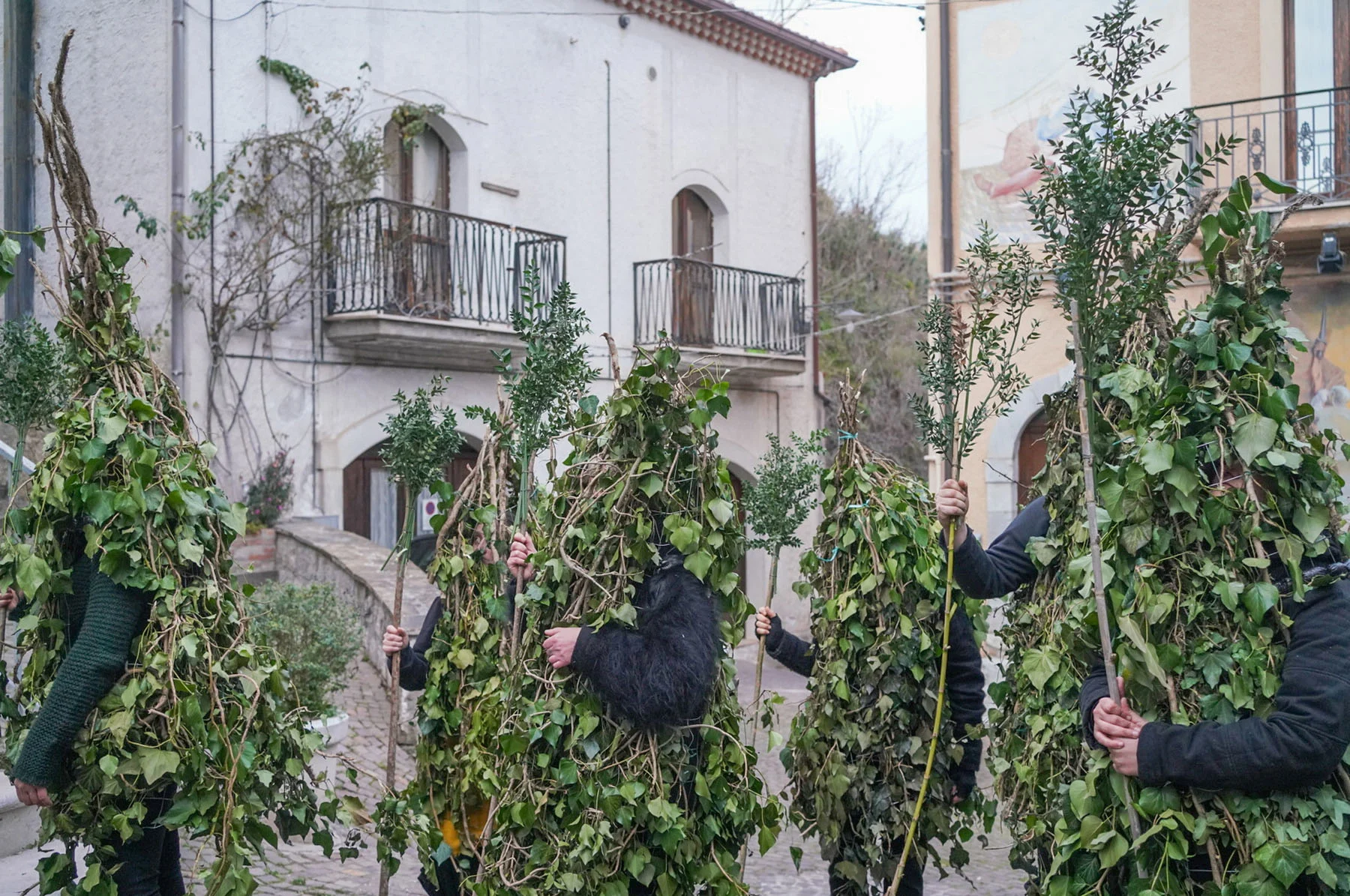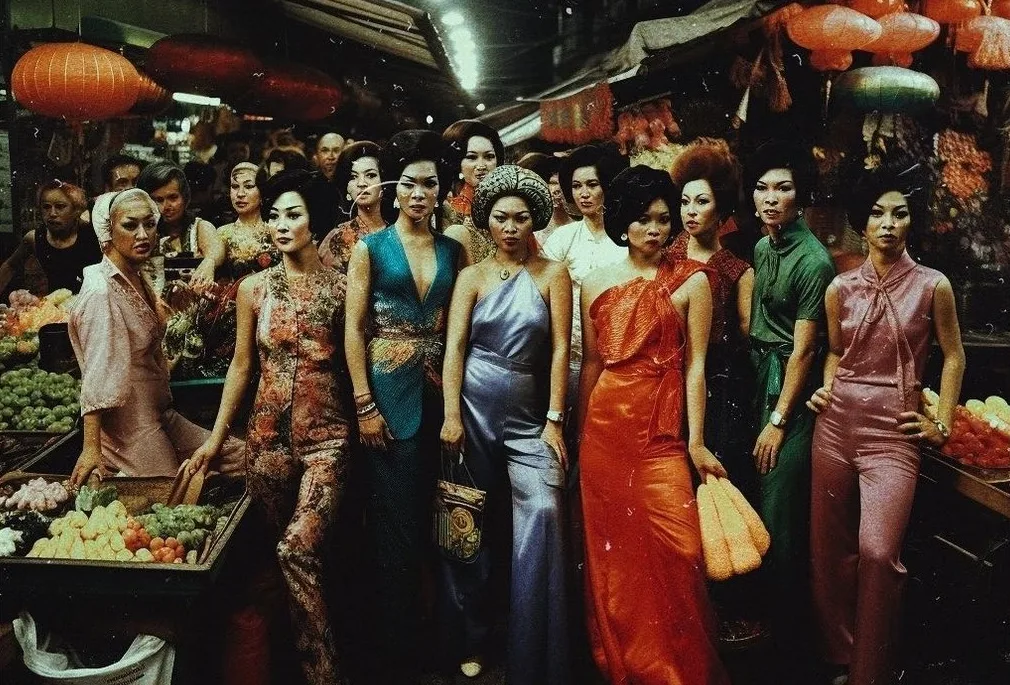

As Lithuanians welcomed a newfound freedom in the wake of the Soviet Union’s dissolution, many women and girls began to express themselves through their clothing, and through their hair. Photographer Silvia Draz recalls being fascinated by peers with long, flowing locks. This fascination, as well as Edwardian photos of models with hip-skimming hair, led her to create a series featuring modern-day “Rapunzels.” She tells Megan Wallace how she explored the varying personal and cultural significance of long hair for each of her diverse cast.
Growing up in the 2000s, photographer Silvia Draz was born into a newly independent Lithuania, a nation experiencing an influx of western culture and freedom following the end of Soviet rule. Amid this rapidly changing cultural landscape, her childhood in the city of Alytus was marked by ghostly high streets and disused brutalist buildings as Lithuanians migrated en masse to the EU and US. But as part of a new, post-independence generation, she recalls a greater freedom of self-expression—Hollywood movies freshly imported from America, and her brother crossing the border into Poland to buy his first pair of jeans.
No longer regulated by Soviet mores dictating modest dress and pared-back beauty looks, Draz’s peers luxuriated in the opportunity to express their femininity through fashion and, importantly, hair. “I remember in my teen years there were quite a few girls who had really long hair, and I was always fascinated with them,” Draz recalls. This long-time fascination with flowing locks has manifested in the photographer’s latest project: “Rapunzels.”


While Draz has some memories of adolescent hair envy, the initial idea for the photo series was inspired by Edwardian photography—specifically, black-and-white images of models posing with uncut, hip-skimming hair. “It’s kind of humorous. These women are super proud and showing off, like, ‘Look at me! I’ve been growing this hair all my life.’ I just thought this was kind of amazing,” Draz explains. “Then I started thinking about the context of how photography was initially somewhat limited to Europe and defined how European women were portrayed. I thought it would be interesting to reshoot it and make it a bit more inclusive.”
The result is “Rapunzels:” a year in the making, the images depict a diverse cast of young women all united by their long locks, some boasting naturally ankle-length hair, others enhanced with extensions for the purpose of the shoot. In an accompanying zine, the models are all asked about their relationship with their hair and how it ties into their culture and sense of self. For some Rapunzels, like Marissa, “hair holds memories,” whereas model Antoine discusses her relationship with hair relaxer and how embracing her hair texture and protective styles allowed her to nourish her locks. Twins Hazel and Kirsty discuss their matching long hair and how it symbolizes “togetherness” and “connection.”



As the project’s title might suggest, Draz chose the German fairytale Rapunzel—as ubiquitous as they come, immortalized by both the Brothers Grimm and Disney—as a jumping off point to explore these varying perspectives. You’d be forgiven for thinking that there wasn’t any further mileage from a story about the girl locked up in the tower with XXL hair, but Draz’s project places this western European tale in dialogue with other global traditions.
While Rapunzel’s long, golden hair represents her naivety and purity, in Lithuanian culture there are a number of figures, including the giantess Neringa, whose long hair connects them to the mythical world. Outside of folklore and pageants, long hair possesses different cultural significance globally, as “Rapunzels” reflects. “One of the models in the series is Sikh and, of course, in Sikhism you don’t cut your hair—long hair is the default,” Draz says. “Another of the models is Sri Lankan, and within her culture a lot of women have long hair and braids as well.”

There’s a nostalgic quality to the photos—in part due to Draz’s preference for shooting on film and her predilection for soft, pastel color profiles in her darkroom process. But, contrasting with the photographer’s ethereal aesthetic, the models are lensed within a series of quotidian settings drawing on archetypal British architecture of the early 2000s. In one image, a Rapunzel pines from a window of a suburban two-up, two-down house, her dark braid lying against the building’s drywall. In another, two young women are dancing and embracing in a park—their blonde locks wrapped around a blue skyline also punctuated by a Tottenham housing estate.
The clash of Draz’s dreamy gaze with a more ordinary setting places her heroines firmly in the modern day, showing them pining for a life more fantastical than their everyday surroundings, but her choice of location was also influenced by the buildings she saw while growing up. “I love Soviet buildings and flat blocks, the architecture is really absolutely ugly but I kind of still enjoy that,” she says. “When I choose locations to shoot in, I always choose somewhere where it kind of gives the same feeling [as where I grew up].”


So many of the models saw their hair as some kind of shield. It could be something for them to hide behind, but often something that protects them.
Fittingly, other images depict models lounging in domestic settings, slouching on upholstered settees, posing in front of sun-washed wallpaper and sprawling out on antique beds. For Draz, these images speak to an adolescent restlessness, the feeling of being sequestered in your family home, waiting for your “real” life to begin. “I worked with a set designer who brought in a lot of nostalgic objects to those scenes, making the setting look a bit noughties or nineties,” she explains. “I thought that was pretty cool, because it took me back to my teenage years, all those years of spending time in your bedroom.”
But don’t get confused, Draz’s heroines aren’t the type to let life pass them by—nor are they waiting for any man to save them. In fact, for these women hair isn’t a symbol of plain femininity. Instead, it’s a record of their life, an unexpected source of strength, or a connection to their heritage. “When asked about their hair, so many of the models saw it as some kind of shield,” Draz adds. “It could be something for them to hide behind, but often something that protects them.”


